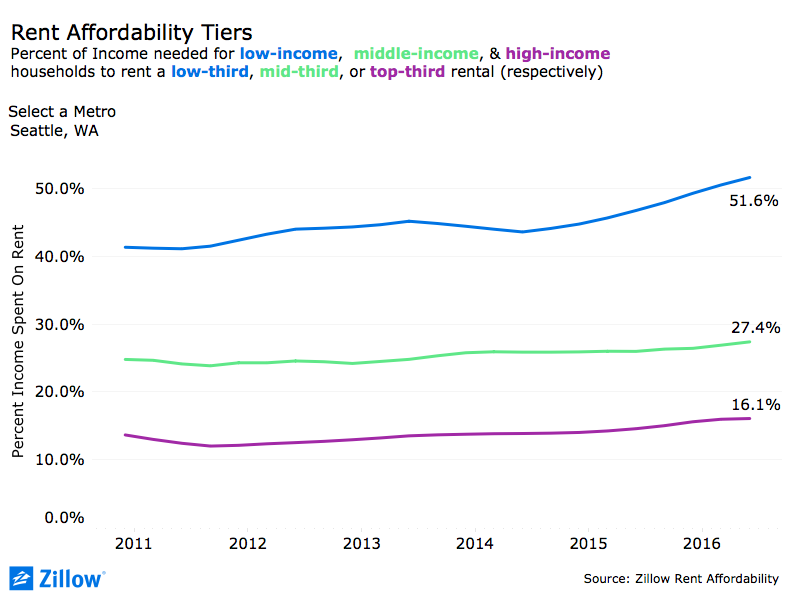For Many Low-Income Renters, Even Low-End Apartments Aren’t Affordable
In the 25 largest metro areas in the country, people with low incomes pay far more than 30 percent for rent. Even markets that were not historically out of reach now take a large chunk of low-income renters’ dollars. In Houston, the median low-income earner spends 65.1 percent of her income on the median bottom-tier rent. In Tampa, it’s 59.1 percent. In Philadelphia, 57.3 percent.
Rent affordability, or really unaffordability, has become a serious issue in recent years, with renters nationally spending a median 29.1 percent of their incomes on rent, up from 25.8 percent historically. Conversely, the share of income spent on mortgages remains relatively low at 15.9 percent, down from 21 percent in pre-bubble years.
While 30 percent has long been considered a reasonable amount of money to spend on housing, a median of 29.1 percent means that a lot of renters are spending more than that – and a lot of them have low incomes.
In the 25 largest metro areas in the country, people with low incomes pay far more than 30 percent for rent. The best case scenario is St. Louis, where the bottom third of renters spend 38.5 percent on the bottom third of rentals. In all the other markets, low-income renters spend more than 45 percent of their incomes on rent.
In notoriously pricey New York, Los Angeles, and San Francisco, the median low-income wage will not even cover a low-end apartment: Median bottom-tier rents in those markets require 111.8 percent, 107.8 percent, and 99.9 percent of the median low-income wage, respectively.
Even markets that were not historically out of reach now take a large chunk of low-income renters’ dollars. In Houston, the median low-income earner spends 65.1 percent of her income on the median bottom-tier rent. In Tampa, it’s 59.1 percent. In Philadelphia, 57.3 percent.
Among renters paying more than 36 percent of their incomes on rent, 60 percent report they have no savings at all, according to earlier research. In many ways, they are at the mercy of their next parking ticket or medical bill. They’re also forced to make difficult decisions:
- They can stay put, often avoiding the worst rent increases by sticking with their landlords long-term.
- They can live with their parents or double up (although this research already is based on household incomes, people with roommates may not have included the incomes of everyone pitching in).
- They also can settle for substandard housing, which sometimes – but not always – means a break on the rent. It’s a choice that can be a slippery slope into an eviction cycle that sometimes ends in homelessness.
- If they’re lucky, they have a housing voucher that limits the amount they spend on rent to 30 percent of their incomes.

